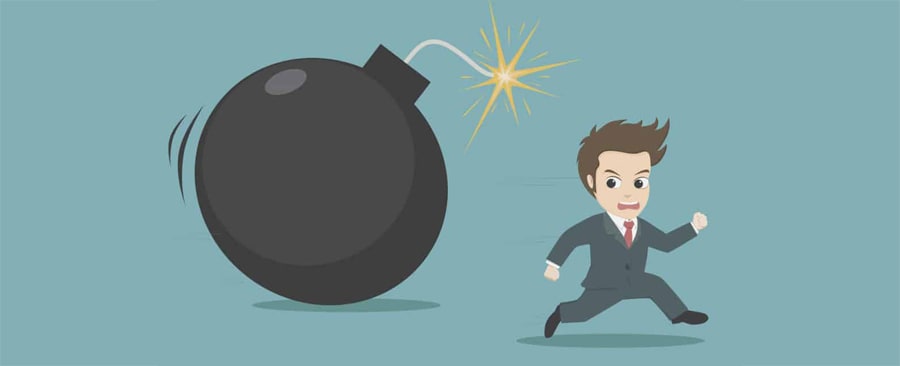Many on the Conservative side of Australian politics want to see Daniel Andrews, the Victorian Premier, fall, especially over the use of security guards in hotels used to quarantine returning travellers who may have had COVID19. Some of Andrews’ critics are being mischievous by linking the Industrial Manslaughter laws that his government introduced to his, and his Ministers’, accountability for COVID19 deaths linked to the hotels. The latest is Tasmanian Senator Eric Abetz in Federal Parliament.
Category: pandemic
Precarious Work, Pandemics and Australia’s Future – Let’s Not Forget the Link
This is a guest post by Michael Quinlan & Dr Elsa Underhill (links added).
In mid- August 2020 Victorian Premier Daniel Andrews labelled insecure work as toxic and argued a fundamental policy reset was required into the future. He stated:
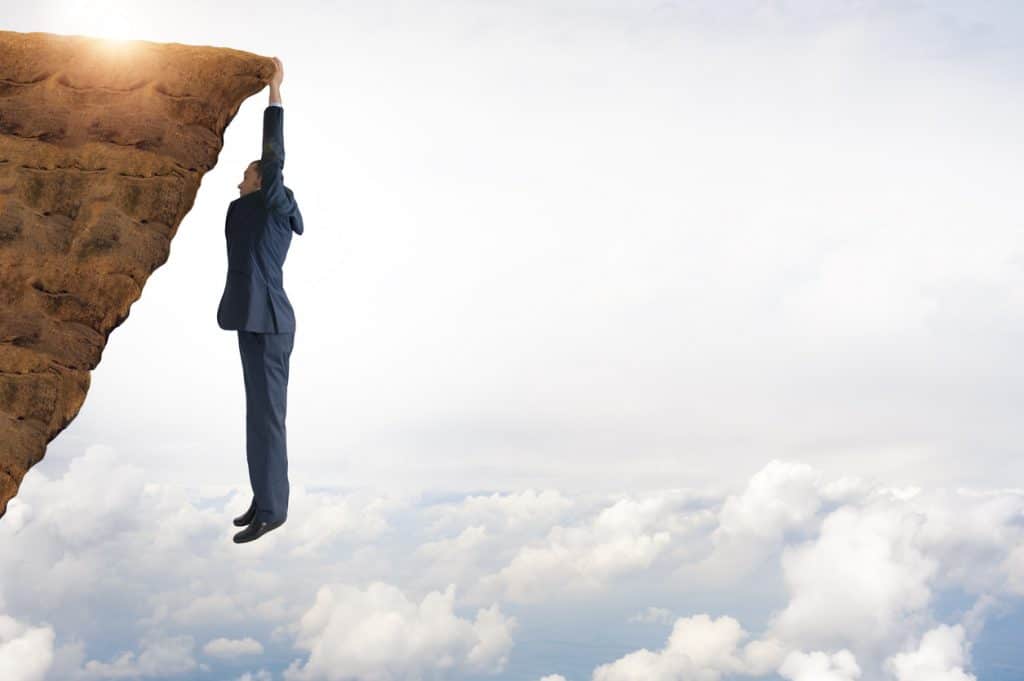
Insecure work is toxic. There is nothing good about insecure work, and when this is done, when this virus has been beaten, we will need to commit ourselves to do something really significant about it. It is no good for anything, for families, for a sense of security [and] for public health, for any purpose. We have a lot of people who work very hard but have no safety net to fall back on and that is just not something we should settle for .
(Guardian 16 August 2020)
The observation generated little publicity and was soon forgotten as the Victorian COVID outbreak caused deepening concern across the nation. But the first major Australian political leader to call precarious work for what it demonstrably was should start a long overdue public debate.
Continue reading “Precarious Work, Pandemics and Australia’s Future – Let’s Not Forget the Link”OHS prosecution request over COVID19 sent to WorkSafe
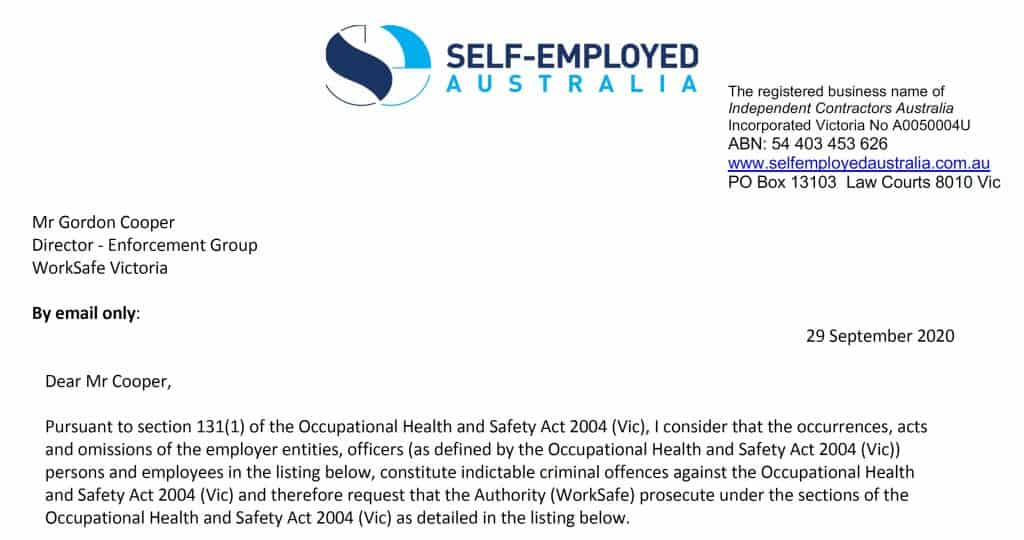
The Australian newspaper is notoriously supportive of the conservative side of Australian politics, so it is little surprise that one of its business journalists, Robert Gottliebsen, is maintaining his advocacy for Industrial Manslaughter and occupational health and safety (OHS) prosecutions over COVID19-related infections, echoing many of the desires of Ken Phillips, the head of Self-Employed Australian and Independent Contractors Australia.
Phillips wrote to WorkSafe Victoria on September 9, 2020 demanding a prosecution by WorkSafe Victoria of a swathe of Victorian government Ministers, public servants, police, as well as
“All members of the management team known as the State Control Centre………….”!
Premier Andrews and Industrial Manslaughter becoming a conspiracy

The pursuit of Victorian Premier Daniel Andrews for Industrial Manslaughter (IM) over the spreading of COVID19 from quarantine hotels is developing into a conspiracy if a recent interview with Federal politician, Barnaby Joyce, is any indication.
Previous SafetyAtWorkBlog articles have discussed the opinions on Andrews and Industrial Manslaughter espoused by journalist Robert Gotttleibsen and Ken Phillips. On television on September 28, 2020, breakfast television’s Sunrise program interview the National Party’s Joyce and the Australian Labor Party’s, Joel Fitzgibbon. Host, David Koch, asked Joyce about the resignation of Victoria’s Health Minister Jenny Mikakos over the Hotel Quarantine issues, and Joyce floridly replied:
A new COVID19 Code of Practice, but why?
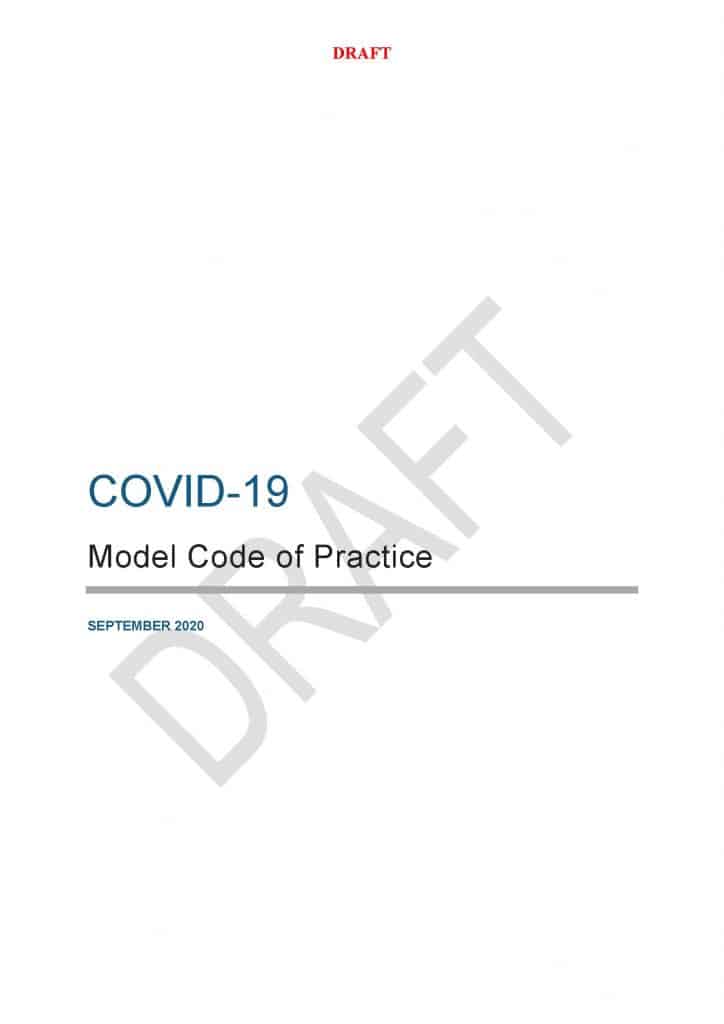
In mid-September the Australian Government released a draft work health and safety Code of Practice about the management of COVID19. It is a good draft to which occupational health and safety (OHS) professionals should submit comments as COVID19 or similar coronaviruses are going to be part of our working lives for many years to come.
The curious part of this draft Code is that it was released by the Attorney General’s Department (AGD) and not its subsidiary Safe Work Australia (SWA).
WFH strategies and evidence
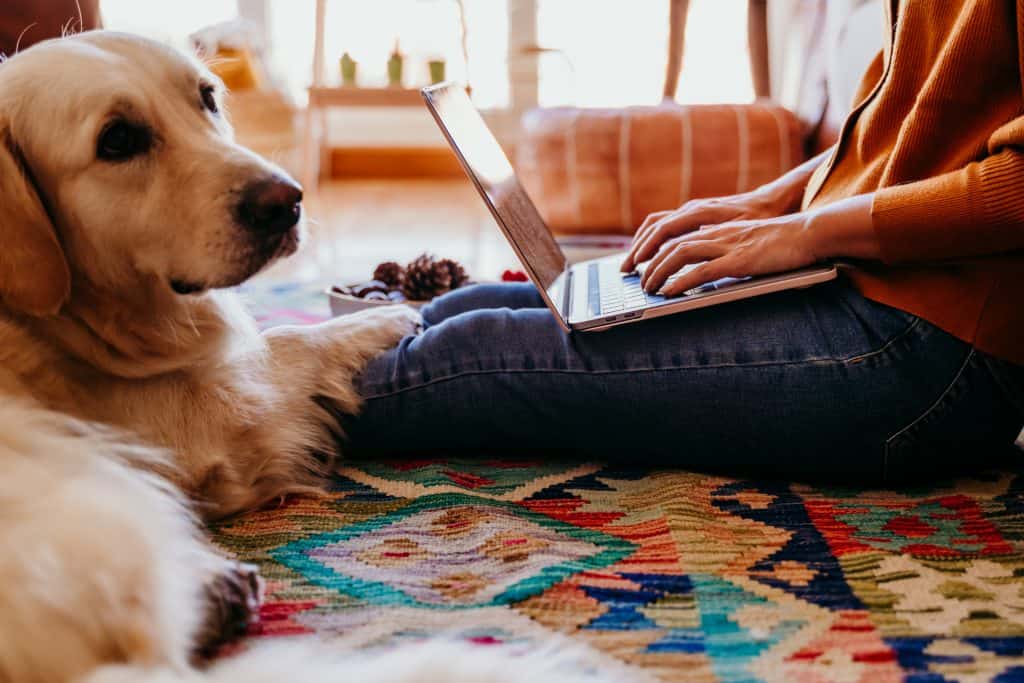
Last week’s article on the occupational health and safety (OHS) risks of Working From Home (WFH) reminded me of a report from late 2019 that I always meant to write about but forgot. In November 2019 the International Labour Organisation (ILO) released a report called Telework in the 21st century: An evolutionary perspective. It ‘s a collection of articles on teleworking from around the world and, although it is pre-COVID19, it remains fairly contemporary on telework and WFH practices and risks.
A return to the Forgotten Royal Commission
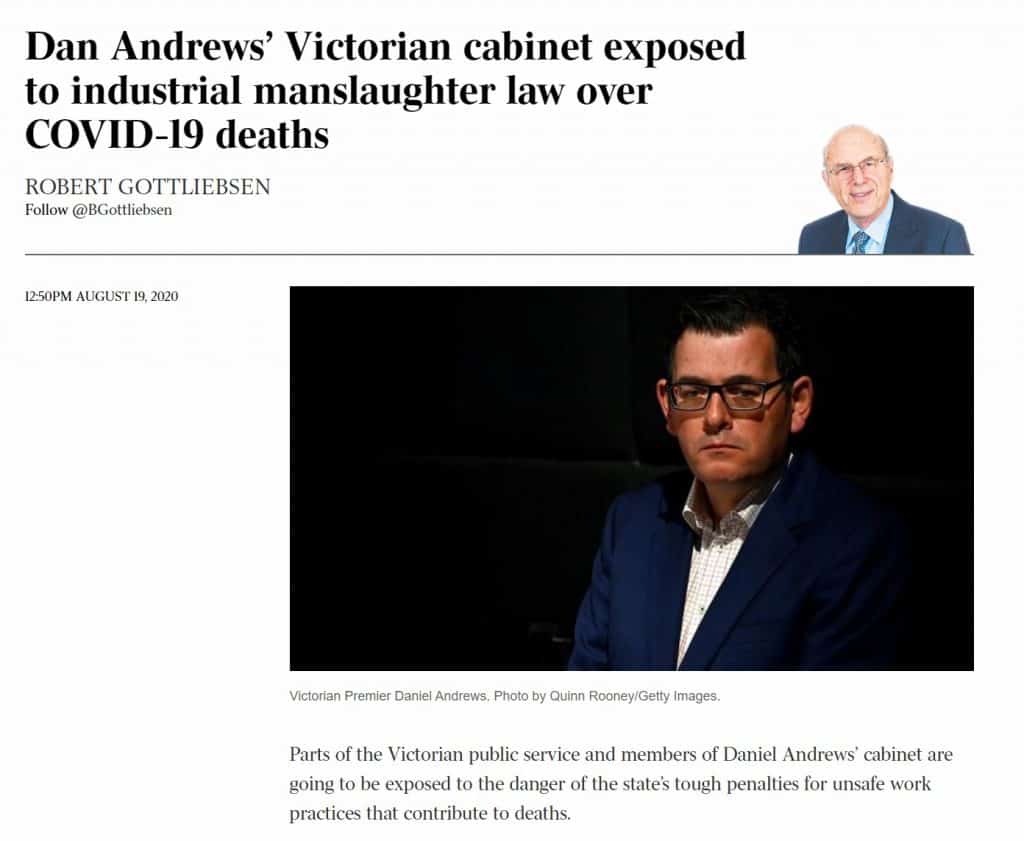
Ministerial accountability. Occupational health and safety (OHS). Leadership. Industrial Manslaughter. These issues have existed in various combinations in various jurisdictions and discussed by many people. At the moment in Australia, this combination has in relation to COVID19 but some of the discussion contains tenuous links and some is masking long held political agendas. Much of it harks back to arguments put to the Royal Commission into the Home Insulation Program.
The latest combination came to my attention from an August 19 article in The Australian newspaper (paywalled) written by business journalist Robert Gottliebsen.

